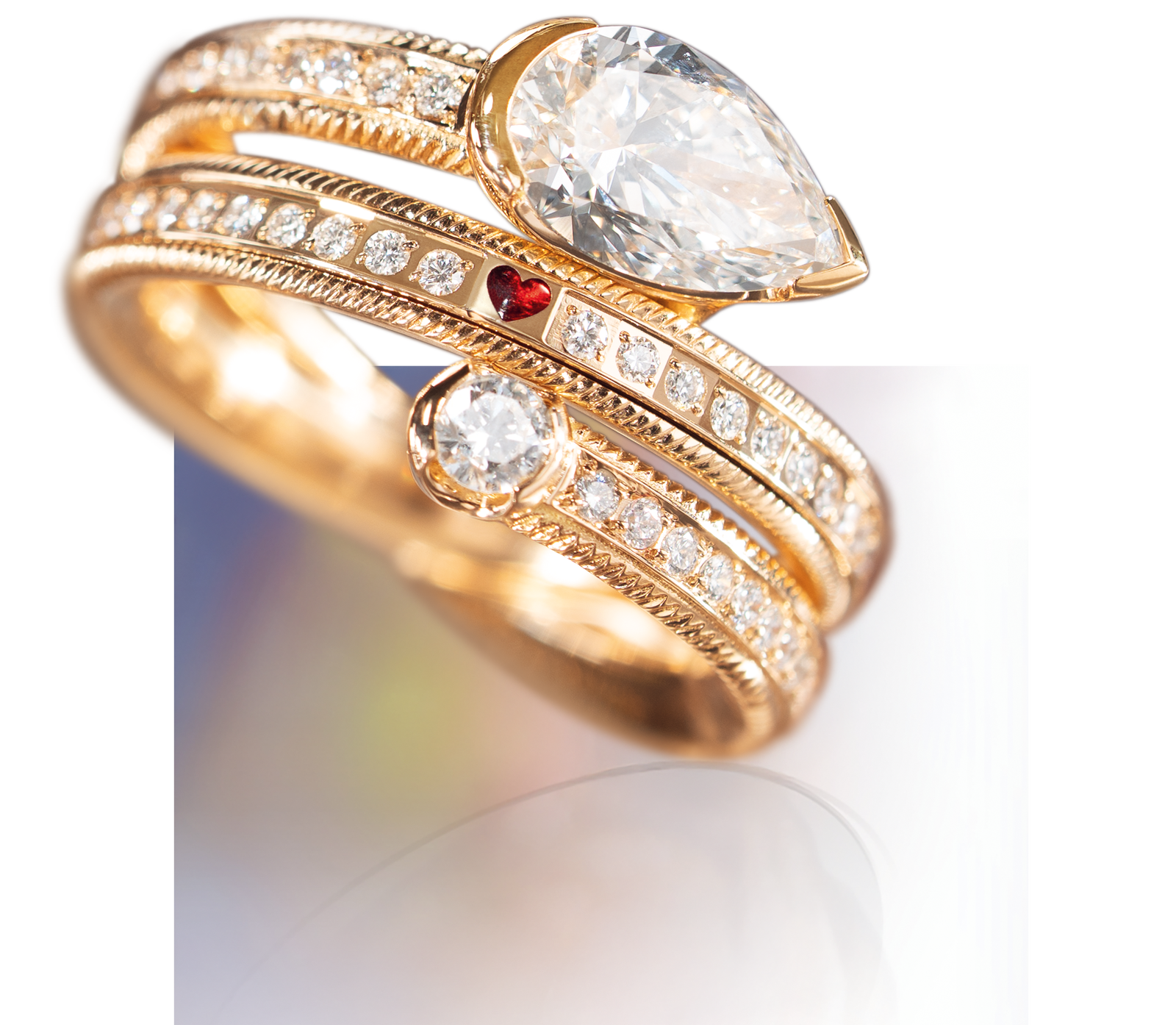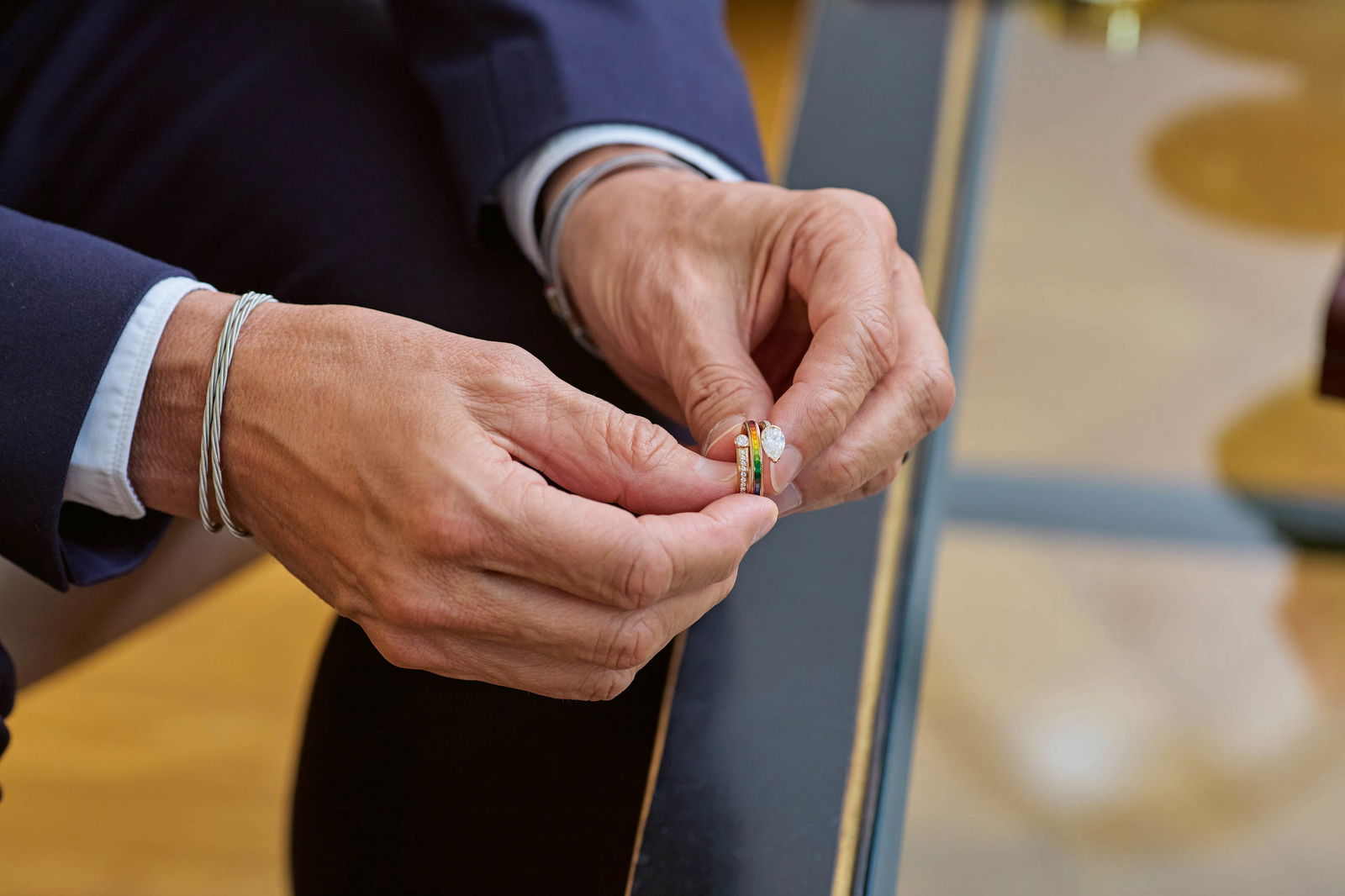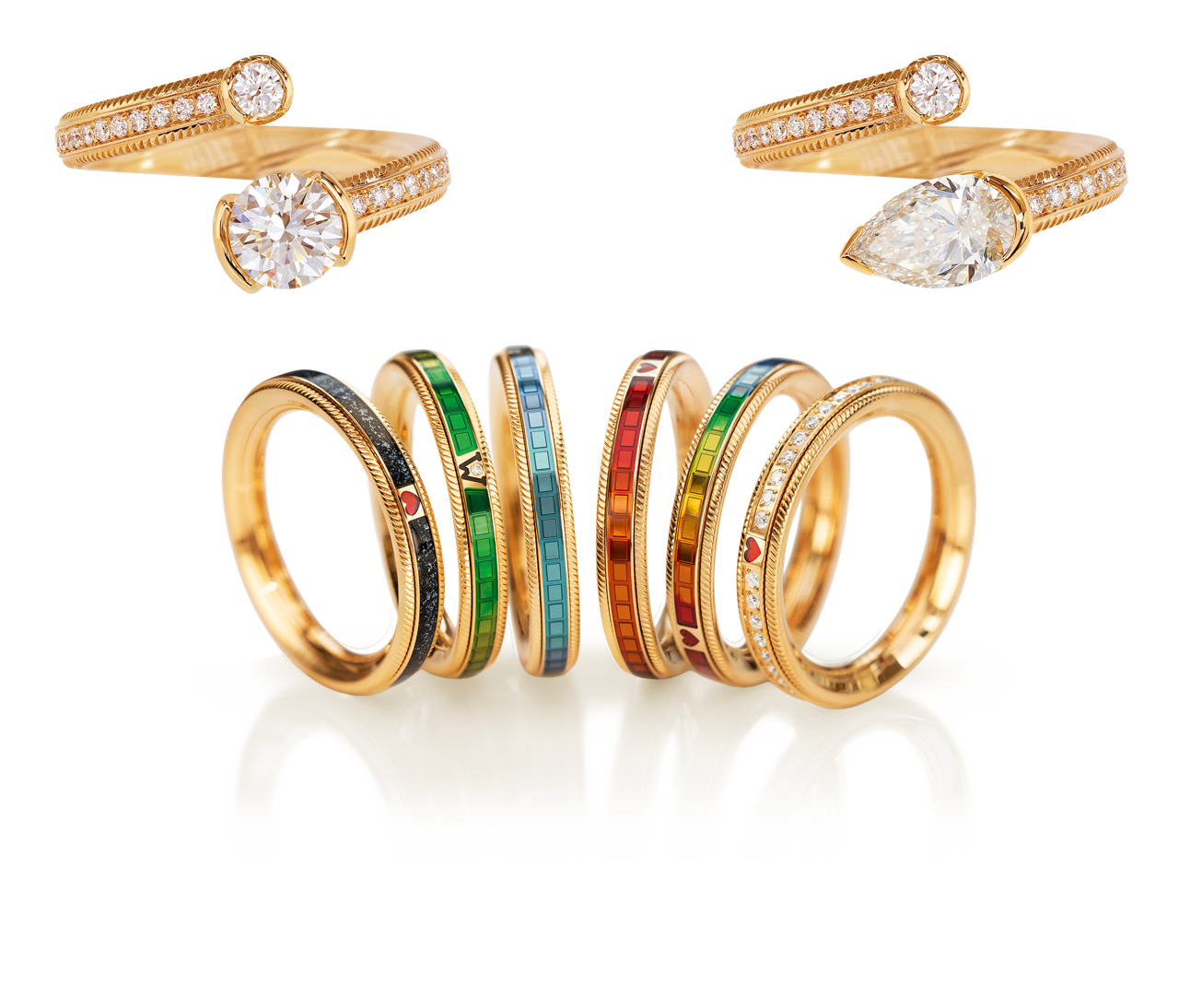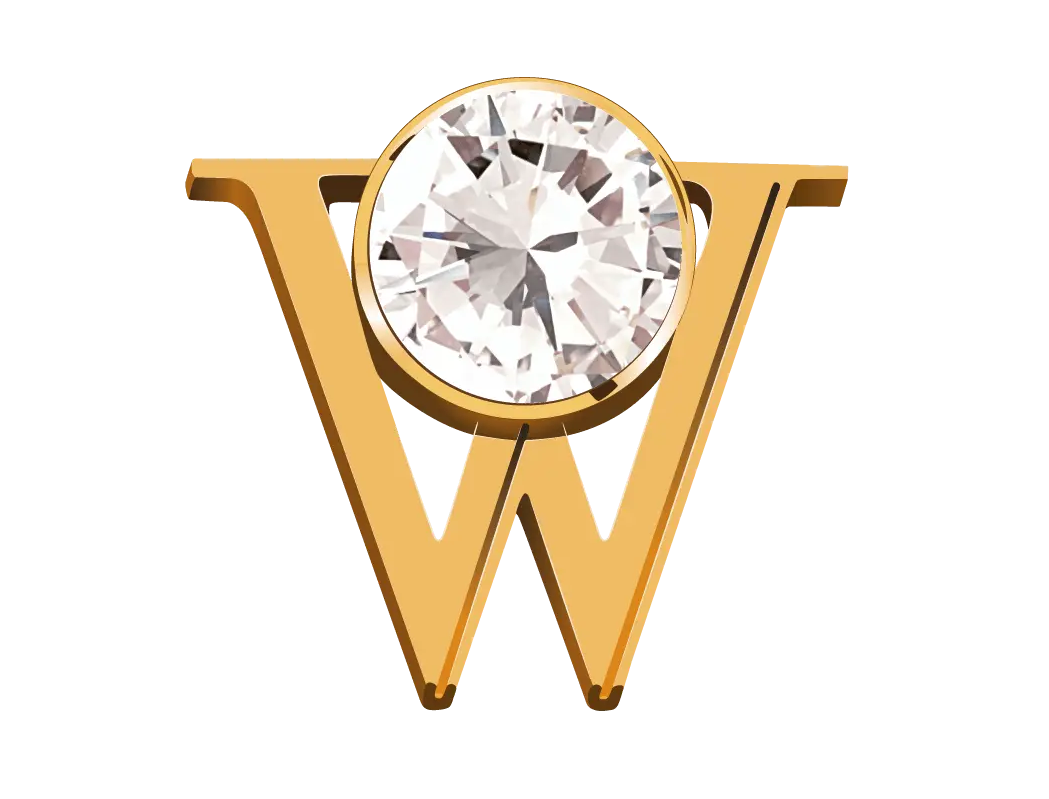“Fireworks on the finger”
In 2025, Wellendorff will once again unveil a highlight of its craftsmanship with the jewellery piece of the year. In this issue, Christoph and Georg Wellendorff introduce you to the jewellery piece that adorns their hands.
Reading time: approx. 10 minutes

The two brothers – one responsible for the customers, the other for the manufactory – are interviewed about the factors that are essential for making such extraordinary creations. Here, they share their vision of how the most beautiful feelings in life can be combined in a piece of jewellery, speak about the invaluable experience of over 130 years of company history and discuss their short walks together.
Mr Christoph Wellendorff, Mr Georg Wellendorff – the jewellery piece of the year is presented to selected customers at exclusive events. In 2025, these events kicked off in May and July at Schloss Bensberg (GER), before heading to Biltmore (USA), Shanghai and Tokyo. What was the atmosphere like there?
Christoph Wellendorff: We invite the wider Wellendorff family and the most loyal collectors to these events. As always, it was a wonderful celebration with a very intimate setting, this time located in an exquisite old hunting lodge. After the celebration had ended, we all agreed that we definitely want to return next year. After all, everyone realises that at Wellendorff you are not just a customer, but a member of a big family.
The jewellery piece of the year certainly plays an important role in the Wellendorff collection ...
Georg Wellendorff: ... Yes, it does, because we are creating it for a very exclusive circle of people. This year it's for the 48 greatest Wellendorff lovers worldwide, for 48 very special women. It is limited to this number because 48 years ago, our father gave our mother her first Wellendorff rope as a present. We honour this birthday with the jewellery piece of the year, but it is also very valuable to our work in another way. After all, coming up with this new idea gives us the opportunity to look to the future, to try out new techniques and to do things that we can surprise our customers with. It allows us to explore avenues that were previously unknown in the jewellery world.


This year, the result is called the DIAMOND DROP ring. What is the idea? What is the vision behind this ring?
Christoph Wellendorff: We started with an unusual, but very exciting and inspiring question: how can three of the most beautiful emotions you experience in life – moments of love, moments of success and moments of happiness – be combined into one piece of jewellery and captured for eternity? How can all this come together to create one harmonious creation? That was the challenging task that my brother Georg had to fulfil together with the team of experts from the manufactory.
Is that why you designed the six different happiness rings that can be selected individually depending on your outfit, mood and moment you want to treasure?
Christoph Wellendorff: That’s right. Our customers can each choose three of these six happiness rings. In other words, the designs that best reflect their emotions and thoughts.
Georg Wellendorff: We create jewellery that effortlessly adapts to every occasion and personal style, that can be worn as a daily companion that showcases every personality in a new light. Above all, as my brother says, it reflects the wearer's mood. As these happiness rings have been designed with different colour gradients and constructed in such a way that they can be clicked into the main ring, the variation possibilities are endless. It is a piece of jewellery that is constantly reinventing itself.


Mr Georg Wellendorff, let's take a look at this diamond drop. The setting of this one is very special. What makes them so unique?
Georg Wellendorff: There are three common types of setting that goldsmiths have been working with for thousands of years. We have combined all three together in the DIAMOND DROP ring. The first is the pavé setting, in which the small diamonds are set close together and held in place with small prongs. At Wellendorff, this is called a two-prong setting. The second type is known as a rub-over setting, which is used for the Diamond-W. This means that the material is “rubbed” just a little over the edge of the cut stone so that it is set flush.
And the third type of setting?
Georg Wellendorff: This is the bezel setting. In this process, a setting is forged around a larger stone, as you can see with the diamond drop. The challenge: because each stone must first be cut from a rough diamond, must be flawless and must be an exact match in terms of colour and cut, each individual diamond drop varies – even if only within narrow tolerances. The second thing we focus on—besides precise setting—is ensuring the stone catches the light from as many sides as possible so as to create a beautiful reflection.
Is finding the balance between a secure setting and maximum brilliance often a challenge for you?
Georg Wellendorff: Yes. On the one hand, we need the strongest possible setting so that the stone is held securely in place. But, on the other hand, we also need brilliance. Of course, this is contradictory at first because the more you surround the stone with gold, the less light can enter and the less brilliance it reveals. That's why we pushed the limits of what is possible with the diamond drop. And yet, you can have complete confidence in this ring – confidence in its safety and its absolute radiance.



Herr Georg Wellendorff, kommen wir einmal zu diesem Tropfendiamant. Dieser hat ja eine besondere Fassung. Was macht sie so einzigartig?
Georg Wellendorff: Es gibt drei übliche Fassarten, mit denen Goldschmiede seit Jahrtausenden arbeiten. In dem Ring DIAMANTTROPFEN haben wir diese drei Arten miteinander verbunden. Die erste ist die Pavéfassung, bei der die kleinen Brillanten dicht nebeneinandergesetzt und mit kleinen Körnern gehalten werden. Bei Wellendorff ist das die Zweikornfassung. Die zweite Fassart ist das Einreiben, hier beim Brillant-W. Das heißt, dass das Material nur ein wenig über den Rand des geschliffenen Steins „gerieben“ und dieser so bündig eingefasst wird.
Und die dritte Fassart?
Georg Wellendorff: Das ist die Zargenfassung. Dabei wird eine Fassung passgenau um einen größeren Stein herumgeschmiedet, wie man es auch bei dem Diamanttropfen sieht. Die Herausforderung dabei: Weil jeder Stein erst aus einem Rohdiamanten geschliffen werden muss, lupenrein sein soll und in Farbe und Schliff in den Proportionen genau zu stimmen hat, variiert jeder einzelne Diamanttropfen – wenn auch nur in engen Toleranzen. Das Zweite, auf das wir neben diesem exakten Umfassen besonders achten: dass der Stein möglichst von allen Seiten Licht einfängt, damit wir diese wunderbare Reflektion erhalten.
Sie bewegen sich beim Fassen also immer in einem Spannungsverhältnis – zwischen Sicherheit und Brillanz?
Georg Wellendorff: Ja. Wir benötigen auf der einen Seite eine möglichst starke Fassung, damit der Stein sicher gehalten wird. Aber auf der anderen Seite brauchen wir eben auch Brillanz. Das widerspricht sich natürlich erst einmal. Denn je mehr man den Stein mit Gold umschließt, desto weniger Licht kann eindringen, und desto weniger Brillanz entfaltet sich. Deshalb sind wir beim Diamanttropfen auch an die Grenze des Machbaren gegangen. Und doch kann man diesem Ring vollstes Vertrauen schenken – Vertrauen in seine Sicherheit und in seine absolute Strahlkraft.



Are these three settings enough for the jewellery piece of the year?
Georg Wellendorff: “Enough” is not in our vocabulary. Wellendorff is all about excellence. That is why when developing the MOMENTS IN DIAMOND happiness ring, we introduced a revolutionary type of setting that has never been seen before anywhere in the world. We call it the Wellendorff mirror finish. This ring features a tiny mirror under each individual diamond. As small as a pinhead, each mirror measures just 1.5 x 1.5 millimetres and is highly polished. There is a small facet between each of these mirrors, which further reflects the light. This creates a marvellous play of light. Even the smallest beam is reflected, refracted and made to dance. It's like fireworks on your finger.
What is the biggest challenge here?
Georg Wellendorff: That you don't touch the mirrored surface. If the gem setter scratches the mirrored surface even slightly with his tool, the light no longer reflects properly, and all the work is lost. You can see the defect immediately on the surface. Then it goes into the furnace, and the process starts all over again.
Christoph Wellendorff: I would like to emphasise once again that our drive to create the perfect piece of jewellery goes so far that we even developed a new type of setting. Everything we do is to achieve perfection, to showcase life's most beautiful emotions even more radiantly, so that this sparkle on the hand also becomes a sparkle in our customers' eyes.
You want to make the emotions visible, to reflect them in the jewellery ...
Georg Wellendorff: ... Exactly, and that's why we've also added the little heart onto the happiness rings, which stands for love.
The heart you are talking about is very beautiful, but also very small. Surely this also requires technical expertise?
Georg Wellendorff: If you want to design a small heart like this perfectly, it can only be achieved if the proportions and contours are exactly right. Everyone has to immediately recognise it as a heart, even from a distance, and shouldn't perceive it as a blob. Thanks to the utmost precision, we have succeeded in doing this on this tiny field that measures only 1.5 x 1.5 millimetres.
Christoph Wellendorff: You did a great job, Georg. Although, you now have one or two grey hairs, and I would venture to say that it's precisely because of these technical challenges and highly sophisticated innovations.
Georg Wellendorff: Well, Christoph, quality is rarely without its share of pain.

An ensemble of emotions: the DIAMOND DROP ring, limited to 48 pieces, and the BRILLIANT ring, as well as the six matching lucky rings MOMENTS IN ONYX, IN GREEN, IN BLUE, IN RED, IN RAINBOW and IN BRILLIANT.
Am I correct in saying that the happiness rings are connected to the main rings using a special click-on system?
Georg Wellendorff: Yes. Its design must be safe and, above all, easy to handle. What's more, they have to look beautiful, in other words, fit perfectly on the finger and not be too thick. The bracket, which holds the ring in place like a kind of bedpost, must not be too thin. But, at the same time, the entire mechanism has to have a slight flexibility to it so that you can feel it click into place. This is only possible if you closely examine the properties of gold. If it's too thin, it loses its flexibility; if it's too thick, it sticks out and looks clunky. The alloy must therefore be suitable for this, which is why we only work with 18-karat gold. Furthermore, we subject the whole thing to a special thermal process in order to help the gold retain its flexible properties.
Can these rings also be spun?
Christoph Wellendorff: Of course! Everything interlocks so that the happiness ring can be spun, as only then can the different colour gradients really come into their own – this also allows me to turn the little heart on each ring upwards.
The colour gradients on the mood rings look so harmonious. Is it difficult to get this right?
Georg Wellendorff: Extremely difficult. The key is getting the cold enamel to the ideal consistency, then applying it at exactly the right moment to ensure everything bonds together perfectly. This can be appreciated especially well on the MOMENTS IN RAINBOW ring, where the different colours flow beautifully from one into another. During enamelling, the colour is applied with a pipette under a microscope. The tip of the pipette must not touch the bottom of the engraving. Otherwise, you will have a mark that can no longer be repaired. So, you need a very steady hand. Even the slightest tremble can ruin the piece.
What can you learn from each other as brothers, and how would you define your business relationship?
Georg Wellendorff: I believe that we complement each other very well. My brother is certainly more spontaneous, more restless, and more impulsive. He always comes up with new ideas. That combines well with my nature as I tend to take a cautious approach, think things through first and see what is feasible.
And you, Christoph, what do you value about your brother?
Christoph Wellendorff: What connects us is our deep mutual trust. My brother has become my best friend over the years. And that probably has a lot to do with his calm nature – and his tireless attention to detail.
I'm sure you're both already working on the 2026 jewellery piece of the year. Would you like to share something about it with us?
Georg Wellendorff: Give something away beforehand? We couldn't do that. Let us surprise you.

In addition to the Jewel of the Year, our Pforzheim workshop also produces other limited-edition masterpieces – discover them on our website.

